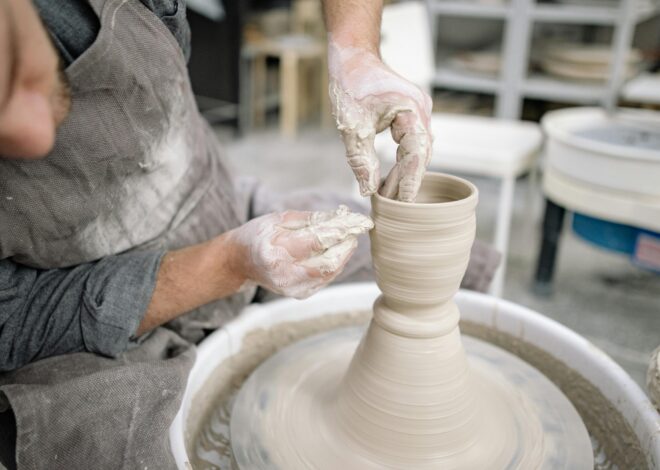
The Psychological Effects of Art on the Human Mind
Introduction
Art has been an integral part of human culture for thousands of years, not only as a form of expression but also as a powerful tool for affecting the mind. Whether it is a painting, sculpture, music, or performance, art has the potential to evoke deep emotions, provoke thought, and stimulate intellectual and emotional growth. While many may experience art for its aesthetic pleasure, research has shown that engaging with art can have profound psychological effects on individuals.
From promoting mental well-being to stimulating creativity and offering therapeutic benefits, the impact of art on the human psyche is vast and multifaceted. This article explores the psychological effects of art on the human mind, examining how it influences emotions, mental health, and cognitive functioning.
1. Art as an Emotional Outlet
One of the primary psychological benefits of art is its ability to serve as an emotional outlet. Creating and experiencing art allows individuals to express their feelings, sometimes in ways that are difficult to articulate through words. Whether through painting, music, or dance, art provides a unique platform for emotional release, which can be particularly beneficial for individuals experiencing emotional distress or mental health challenges.
Key Characteristics:
-
Emotional Expression and Catharsis: Art provides a safe space for individuals to confront and release complex emotions. The process of creating something can be therapeutic, helping people manage emotions like sadness, anger, frustration, or joy. It allows them to externalize inner turmoil or celebrate their achievements.
-
Example: When individuals are feeling overwhelmed or anxious, engaging in art can offer a sense of catharsis. Research shows that people who engage in artistic activities, such as drawing or painting, report feeling less stressed and more at ease.
-
-
Music as a Therapeutic Tool: Music, in particular, is an emotional medium that has a direct connection to mood regulation. Research suggests that listening to music can trigger the release of dopamine, the brain’s “feel-good” neurotransmitter, providing emotional relief.
-
Example: Music therapy is used to help people cope with emotional and psychological difficulties. Studies show that patients suffering from depression or anxiety can experience relief and improvement in their symptoms through regular music therapy sessions.
-
Art offers individuals a powerful, non-verbal way to process and express emotions, facilitating emotional healing and psychological growth.
2. Art and Mental Health
Art has long been recognized for its potential therapeutic benefits, and it has gained increasing attention as a tool in mental health treatment. Art therapy, which combines the creative process with psychological exploration, is an established form of treatment for various mental health conditions. The psychological effects of creating or engaging with art are often profound, and it can be used to treat conditions such as depression, anxiety, trauma, and PTSD.
Key Characteristics:
-
Art Therapy for Mental Health: Art therapy encourages individuals to express their feelings and explore their thoughts in a safe, non-judgmental environment. This therapeutic technique is often used in counseling and rehabilitation settings to help people process trauma, manage emotions, and improve their overall mental health.
-
Example: A study by the American Art Therapy Association revealed that 88% of participants reported a significant reduction in stress after engaging in art therapy. The non-verbal aspect of art therapy helps individuals process difficult emotions that may be hard to express with words.
-
-
Reducing Anxiety and Stress: Engaging with art, either by creating or viewing it, can reduce stress levels and help individuals relax. Studies have shown that spending time in a museum or engaging in hands-on art creation can lead to a decrease in cortisol levels, the hormone associated with stress.
-
Example: Research published in Psychology of Aesthetics, Creativity, and the Arts indicates that even short periods of art appreciation or participation in creative activities can significantly reduce anxiety and stress, improving overall well-being.
-
Through its ability to stimulate creativity and provide a means of emotional expression, art has become an essential component in mental health practices, promoting healing and personal growth.
3. Art and Cognitive Development
Art does more than just impact emotions; it can also enhance cognitive functioning. Engaging with art, whether through creation or appreciation, can stimulate brain activity, improve memory, and encourage innovative thinking. The cognitive benefits of art are particularly evident in children and older adults but apply to individuals of all ages.
Key Characteristics:
-
Enhancing Problem-Solving Skills: Artistic expression encourages creative thinking and problem-solving. Whether an artist is deciding how to convey a message or a viewer is interpreting an abstract painting, the engagement with art stimulates the brain’s critical thinking and decision-making abilities.
-
Example: In the field of education, art has been shown to improve children’s ability to solve problems and think critically. A study by the Harvard Graduate School of Education found that children who participated in art activities demonstrated improved problem-solving abilities in math and science.
-
-
Memory and Focus: Engaging in art activities can also improve memory retention and concentration. Studies have shown that artistic practices, such as drawing, painting, and sculpture, improve spatial awareness and memory skills.
-
Example: Older adults who engage in artistic activities show improved cognitive function, including enhanced memory and attention span. Art-based interventions, such as painting or crafting, are increasingly used in senior care settings to maintain mental acuity and delay cognitive decline.
-
Art engages the brain in ways that enhance cognitive skills, contributing to improved memory, concentration, and problem-solving abilities.
4. Art as a Social Connector
Art is not just a personal experience; it also plays a vital role in social interactions and community building. Art can serve as a bridge between individuals, offering a shared experience that fosters communication, empathy, and understanding. Whether through collaborative art projects, public art installations, or shared art exhibitions, art provides a platform for collective engagement.
Key Characteristics:
-
Promoting Empathy and Understanding: Engaging with art can foster a deeper understanding of different cultures, experiences, and perspectives. It can evoke emotions and help individuals see the world through the eyes of others, promoting empathy and compassion.
-
Example: Exhibitions like the Human Library Project or public art installations that tackle social issues often provoke conversations that help break down societal barriers and foster empathy among diverse groups of people.
-
-
Community and Social Bonding: Collaborative art projects and community-based art initiatives bring people together, creating a sense of unity and shared purpose. Participating in group art activities strengthens social bonds and enhances feelings of belonging.
-
Example: Public art events, such as mural projects, encourage individuals from different backgrounds to come together, contributing to a sense of community and shared identity.
-
Art provides a means for individuals to connect with each other, fostering social cohesion and emotional bonds through shared creative experiences.
5. Art and the Brain: Neuroscience Behind Artistic Expression
The relationship between art and the brain is complex, with various studies examining how the brain processes and responds to artistic stimuli. Research in neuroscience has shown that engaging with art, whether creating or appreciating it, triggers several neural pathways that are associated with pleasure, creativity, and memory.
Key Characteristics:
-
Activation of the Reward System: When individuals engage with art, their brains release dopamine, the neurotransmitter associated with pleasure and reward. This explains why people often experience a sense of joy or satisfaction when engaging with art.
-
Example: A study by the University of California revealed that the brain’s reward system is activated when viewing art that is aesthetically pleasing. This is similar to the way our brains respond to other pleasurable stimuli, like food or social interactions.
-
-
Creativity and Brain Function: The process of creating art stimulates various regions of the brain, including those associated with problem-solving, critical thinking, and emotional regulation. Engaging in creative activities has been shown to enhance overall cognitive function, improving adaptability and mental flexibility.
-
Example: Research from the National Institutes of Health suggests that people who engage in regular creative activities exhibit higher levels of cognitive flexibility and mental resilience, both of which are important for problem-solving and adaptability in everyday life.
-
Art stimulates the brain in ways that enhance mental well-being, cognitive flexibility, and emotional health, contributing to a balanced and fulfilling life.
Conclusion
The psychological effects of art on the human mind are profound and multifaceted. Art offers individuals a means of emotional expression, enhances cognitive development, fosters social connections, and provides therapeutic benefits for mental health. Whether through creating or experiencing art, individuals can tap into the psychological power of art to heal, grow, and connect with others.
As we continue to explore the intersection of art and psychology, it becomes clear that art is more than just a form of entertainment or aesthetic pleasure. It is a vital tool for personal expression, emotional healing, and cognitive development, shaping the way we understand ourselves and the world around us.
admin
Related Posts

The Intersection of Technology and Art in the 21st Century

The Role of Art in Shaping Cultural Identity
